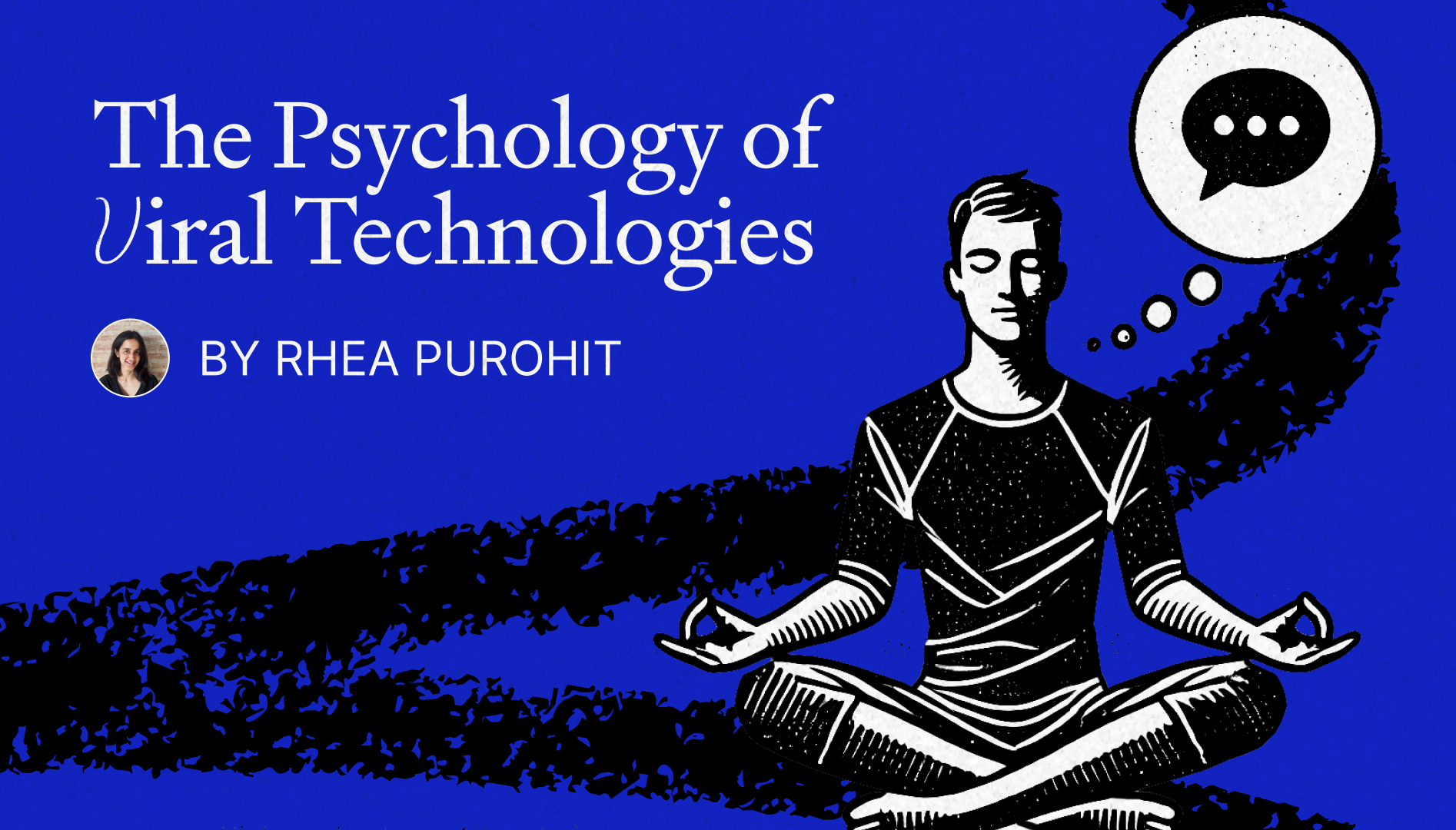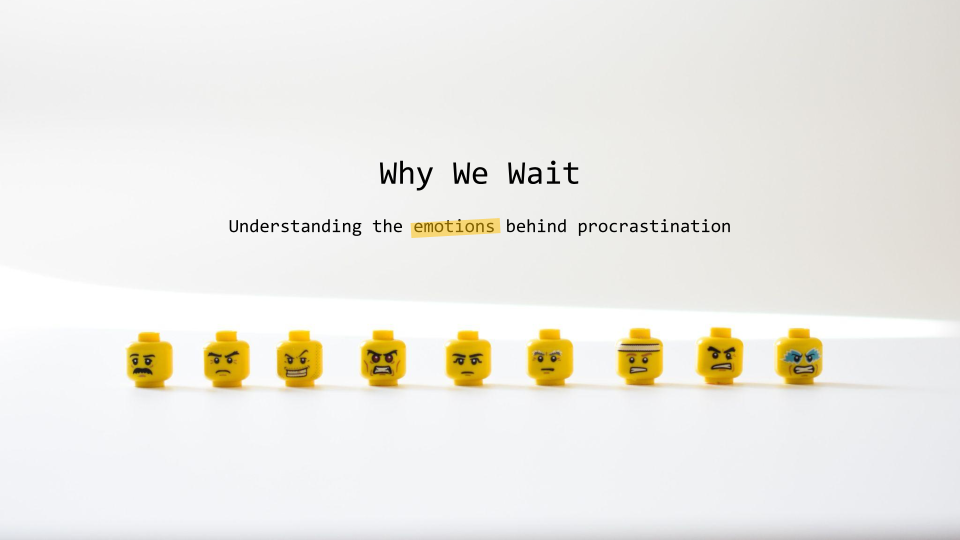- Links for Thinks
- Posts
- 🔗 🧠 Links for Thinks #3
🔗 🧠 Links for Thinks #3
AI, Writing, Psychology, Productivity, & Design Inspiration

Five resources every Monday(ish) with actionable takeaways to make you a better designer.
This past week had me thinking a lot about change. Without diving into the details, I’ll just put this out into the ether.
Design is more important than ever. Design is communication. Design is information. Design is system creation. Design is collaboration. Design is human.
And though the answers and solutions to the issues we’re facing aren’t easy or straightforward—we need to acknowledge that we’re in an unprecedented time of creation and attention capturing. We all hold the power of influence. The power to create impactful and meaningful stuff. If you feel like you don’t, there’s nothing stopping you. You have a voice. A voice that is unique from the culmination of your experiences. Somebody needs to hear that voice.
Equip yourself with the information and tools to make the change you wish to see.
Here are some links to help you think about change.
TODAY'S EDITION
— Jake

AI’S AWKWARD TEENAGE YEARS
Let's talk about where we actually are with AI right now. Not the far-future sci-fi stuff, but the messy middle where we're all trying to figure out how to make this tech actually useful. Between the "15 ways AI will change the world" hype and the "wtf can this actually do" reality, there's a whole lot of interesting design territory to explore.
THE JUICE
Mind the Gap: Right now we're caught between AI's theoretical ceiling (pretty high) and its practical floor (sometimes... not so high). The real opportunity? Making AI actually useful for specific problems right now instead of trying to get too far ahead of those problems.
Language is UI: Everyone keeps waiting for some fancy new UI to replace chatbots, but here's the thing: we've been iterating on screens for quite some time and they're still mostly just rectangles. Maybe words are the new interface, we just need to figure out the ways in which to innovate.
Backend Design: Just like traditional software needs backend engineers, AI systems will need designers to figure out what happens behind the curtain. Someone's gotta decide what the AI handles versus what a user controls.
Choose Your Own Adventure as a Service: Traditional software follows fairly fixed user journeys - like everyone reading the same book. But AI opens up the possibility of dynamic paths that adapt to who you are and what you need in the moment. Imagine software that doesn't just guide you through pre-built flows, but actually rewrites itself based on your unique context and pain points. What should that look like?
Prompting is Editing: Want to get better at working with AI? Think like an editor. Be precise, be clear, and then get clearer. Pretend like you’re getting paid to remove words. Maybe then people (AI) will finally get what you’re trying to say.
Jobs To Be Done: Everyone's talking about AI making us more productive, but the real magic might be in how it fills our emotional needs. Think about it - AI isn't just about automating tasks, it's becoming a confidant, a listener, a shoulder to lean on. While we're all focused on making AI better at doing stuff, we might be overlooking its potential to help us feel stuff. For better or for worse.
Great Artists Steal: This isn’t AI specific but the folks at Anthropic have a neat ritual they call "Slack Notebooks" - basically personal Slack channels where they dump their brain. It's like a digital notebook but with better search and way less pressure than documentation. Sometimes the best ideas aren't the most complicated ones.

RIP CREATIVE BLOCK
Ever stared at a blank page until your eyeballs dried out? Yeah me too. But here's the thing - what if I told you writer's (or any creator’s) block isn't some mystical curse, but actually just an inventory issue? Instead of torturing yourself at a desk, turn writing into a collection game. Become a curator of experiences and ideas. And believe it or not, it works much better than the usual "stare at screen & hate yourself" approach.
THE JUICE
The Note-Taking Revolution: World-class writers don't wait for inspiration - they hunt for it. There are plenty of well-known creatives that swear by constant note-taking. The secret? Your memory is garbage, but your notebook never forgets. And notes end up turning into much more than just words.
The Supply Chain Theory: Creative block isn't about talent or motivation - it's just running out of ingredients. A chef can’t cook with an empty kitchen, and creators can’t build without material.
Step Away From the Computer: The best making rarely happens at your desk. It happens in conversations, during walks, or while eavesdropping on that weird conversation at the coffee shop (you know the one). This is the case for any time you’re in a rut. Go for a walk.
The Two-Screen Strategy: When you finally sit down to write, have your blank document on one screen and your collection of notes on the other. Stuck? Just scroll through your inspiration library. Get off everything else, there isn’t anything good there.
Is it Okay to Record This Call?: Recording and transcribing conversations can give you more authentic material than hours of forced writing. Plus, you get to call hanging out with friends "work" - that's what we call a win-win.
Fun bonus statistic: If you're saving just three ideas per day, you'll have 1,000 by year's end. What a treasure trove.
LATE BLOOMERS
The iPhone wasn't the first smartphone. ChatGPT wasn't the first AI chatbot. The Macintosh wasn't the first computer with a GUI. Yet they all changed everything. Why? Because they were the first that made the complicated feel easy. Turns out, being first to market means a lot less than being first to make something fit so effortlessly into our everyday lives. Who’da thunk?
THE JUICE
The Psychology of Adoption: There are four big factors that determine if we'll actually use new tech:
Performance (Is this actually useful or just shiny?)
Effort (Can I figure this out without reading a manual?)
Social Proof (Are people I trust using this?)
Support (If I get stuck, can I get help?)
The Friendly Factor: The original Macintosh was technically worse than its competitors. But it had a face-like design and felt "friendly." Sometimes approachability beats raw power. We’re really just looking for friends in this world.
It's All In The Packaging: ChatGPT blew up because it wrapped AI in something we all understand: chatting. The tech wasn't new, the presentation was.
The Revolution Will Be Psychological: The next big tech breakthrough might not be about better algorithms or faster processors. It might just be about understanding how humans actually want to use technology.
The Trust Game: Before people will adopt new tech, they need to feel like they can trust it. That's why features like Claude's computer use or ChatGPT's Canvas work - they make AI feel more like a collaborative tool than a black box.

HEADLINE GOES HERE…
We’ve all been in that moment where we’re staring at a task while doing literally anything else (like reading this newsletter 🙃). For thousands of years, even big brains like Socrates were scratching their heads about why humans do everything except The Important Thing™. But what if I told you procrastination isn't your enemy, but more like a friend who's trying to tell you something important... in the most annoying way possible?
THE JUICE
It's Not You, It's Your Brain: Your procrastination comes from a showdown between your ancient limbic system (think: caveman brain) and your fancy prefrontal cortex (think: modern responsibility brain). They're basically just bickering at each other in there.
The DUST Method: When you're stuck in procrastination hell, check if your task is:
Difficult (Solution: Move the starting line back a bit)
Unclear (Solution: Get specific af with your to-do list)
Scary (Solution: Break it into smaller, less intimidating wins)
Tedious (Solution: Turn it into a game or pair it with something you actually enjoy)
Listen to the Signal: Sometimes procrastination is your brain's way of flagging that something isn't right. Instead of fighting it, treat it as valuable feedback about what needs to change.
The Cycle of Stress: Most of our procrastination anxiety comes from beating ourselves up about procrastinating. It's a loop of guilt that only makes the original problem worse.
Permission to Rest: Sometimes you're not dealing with DUST - you're just tired and grumpy. And that's fine. Give yourself permission to recharge instead of spiraling into unnecessary guilt. Take that dang nap.

WILD WESTS OF THE WEB
This is the third week in a row I'm telling you to get weird with your designs. Find some magical moments. Push beyond common conventions and patterns. And when you want to get real wild—find a completely whimsical way to bring something to life. We have enough websites that look like this. Time to color outside the lines.
THE JUICE
Break the Rules (With Purpose): It's easy to get stuck in the "best practices" box. Sure, there's a place for clean, minimal design—but not every place needs to be a meditation retreat. Sometimes the best user experience is one that makes people smile.
Unbeigeification: Just like modern interiors have fallen into the beige trap—sorry beige folks, I know it's safe and looks clean—digital design has become an ocean of dark mode interfaces and rounded corners. Your product doesn’t need to look like a Notion page—it's allowed to have personality.
Small Sparks, Big Joy: Tiny moments of delight—a playful hover state, a cheeky error message, an unexpected animation—can transform a mundane interaction into a memorable one.
Design with Character: Your interface is having a conversation with users. Give it a voice, a personality, a point of view. Just make sure it's wearing the right outfit for the occasion.
The Fun-ctional Balance: Being whimsical doesn't mean sacrificing usability. Think of it like seasoning—just enough to bring out the flavor, not so much that you can't taste the meal.
THANKS FOR READING—SEE YOU NEXT MONDAY
In the meantime, feel free to:
Forward this email or share this link with your friends if you feel they need some links for thinks: https://www.linksforthinks.com/subscribe
Reach out with any suggestions or questions for the newsletter.
Send me some of your favorite links and takeaways.
Cheers, Jake





